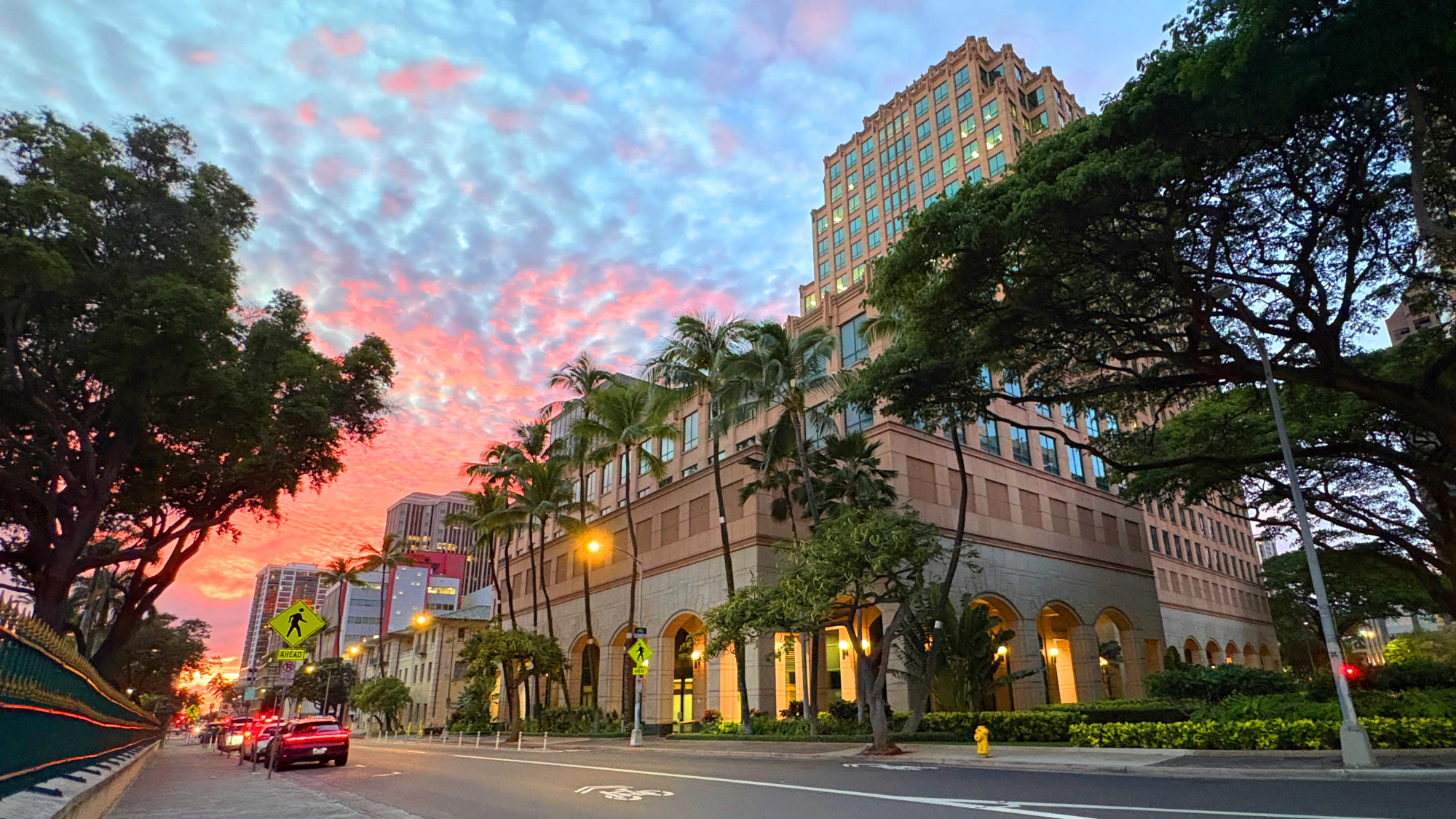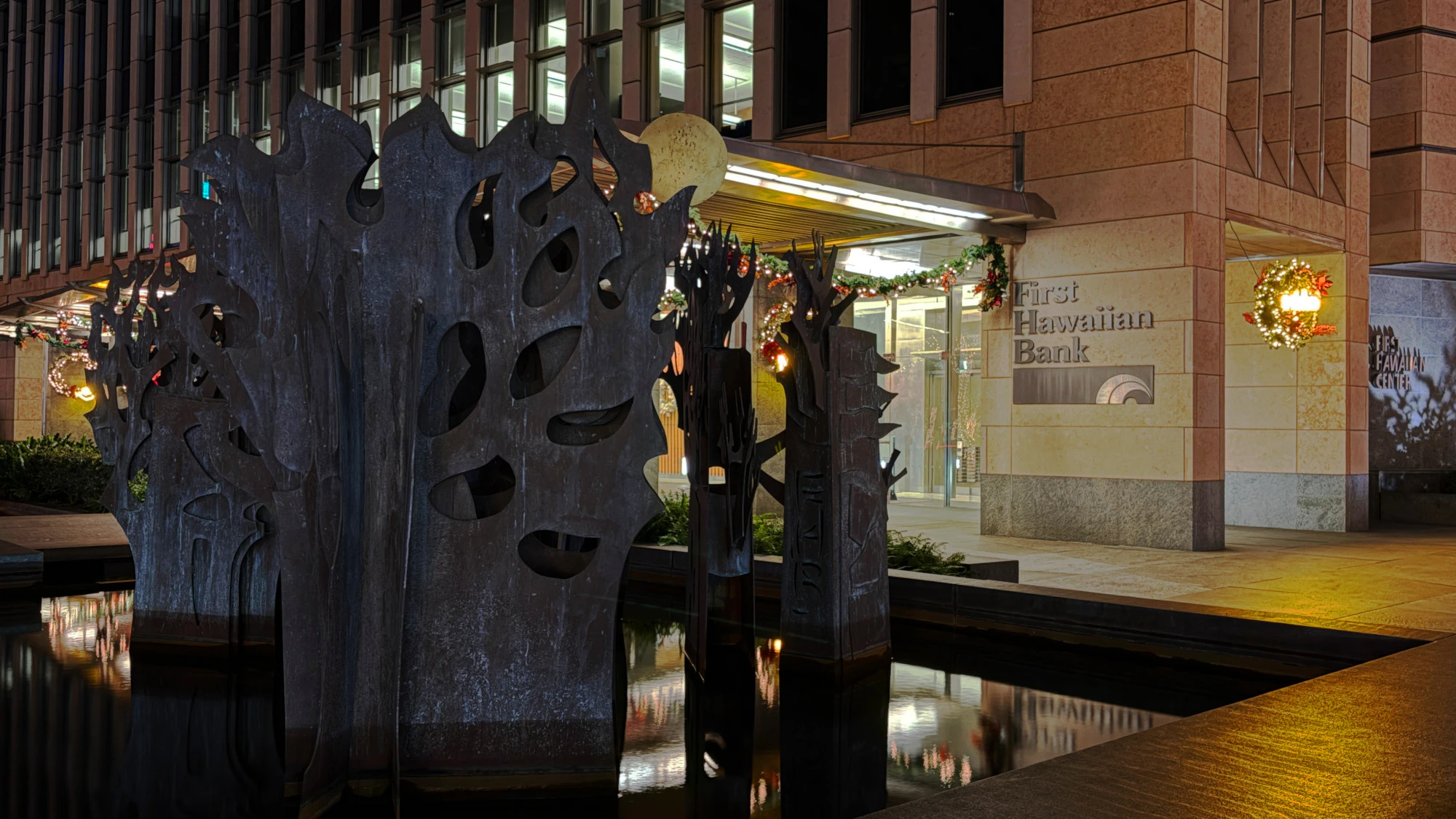Tucked into the southern corner of Nāwiliwili Harbor on Kaua‘i is the mouth of Hulē‘ia River, and just a few yards upstream lies a dam built of earth and hand-placed stones. Legend says that long before ships moved in and out of the harbor, menehune stacked stone by stone to raise a kuapā, a massive wall nearly half a mile long across a bend in the river, creating a huge brackish pond.
Alakoko, also known as Menehune Fishpond, is a wonder of Hawaiian aquaculture that blends engineering with intimate knowledge of tides, currents and marine life.
Alakoko was more than stone and water. The fishpond was bound by kapu, ancient laws that carried the weight of both survival and spirit. The konohiki, high on the ridge, would watch the shimmer of incoming fish runs and decide when the mākāhā, the sluice gates, would open, when they would close, and who would be allowed to cast a net. Makaʻāinana, commoners, needed explicit permission, for taking fish without consent was theft and a serious offense. Mākāhā were managed to allow juvenile fish in but prevent adults from escaping, and harvesting was timed so populations would replenish. Certain species of fish were kept for the aliʻi alone.
At certain times of year, the konohiki would climb to a point above the river where he could see all of Alakoko. There, he watched for the shimmering flash of fish runs moving toward the river mouth.
Ceremonial protocols were woven into this work. Often, fishermen kept kūʻula, a stone god used to attract fish. Before their kūʻula, the fishermen placed offerings of ʻawa, cooked fish, and other foods to ensure plentiful harvests. Desecrating the kūʻula or neglecting their offerings could bring misfortune. More than superstition, these acts were acknowledgments that abundance was a gift, never to be taken for granted.
Alakoko witnessed centuries of change. It stood through the rise and fall of chiefs in the Līhu‘e district, through the rule of Kaumuali‘i, the last independent king of Kaua‘i and the political upheaval that followed the unification of the Islands under Kamehameha. Even after the Great Māhele of 1848, when vast stretches of Hawaiian land passed into foreign hands, the fishpond remained tied to the descendants of those who had long tended its waters.
Through generations, the role of konohiki was passed down along with deep knowledge of tides, spawning cycles and the delicate balance between human need and the natural world. Fishponds were more than a source of food. They were a living part of the community, sustained by belief, stewardship and respect for the ʻāina.
But time is not always kind to what is left untended. By the early 1900s, the pond was no longer maintained in the old ways. Red mangrove, introduced to control erosion, spread swiftly, choking its open water and weakening the ancient wall. In 1973, Alakoko was placed on the U.S. National Register of Historic Places. By 2009, it was named one of Hawaiʻi’s Most Endangered Historic Places.
The warning did not go unanswered. Around 2015, a group of paddlers, cultural practitioners and environmental stewards came together as Mālama Hulēʻia. Their mission: clear the mangrove, repair the kuapā, and breathe life back into the fishpond. It took years of backbreaking work, hauling invasive trees from the water and clearing the silt-choked channels.
In 2021, Alakoko and 102 surrounding acres were secured for permanent community stewardship through the efforts of local advocates, the Trust for Public Land and generous supporters.
Today, the water flows more freely, the kuapā rises again, and community workdays bring people back to the shore. Schoolchildren stack stones where their ancestors once did, and voices carry the stories of the past over the same waters that have mirrored the moon for more than 600 years.
Yet, for all its history and restoration, some say Alakoko holds more than the memory of its builders. They say that on certain nights, the fishpond is not so still, and the riverbank not so empty.
One such night, two brothers drove out to a quiet lookout near the pond. They had new paintball guns and wanted to try them out. Under a canopy of stars, they began firing at a road sign, laughing at the splatter of color in the dark. But after only a few shots, the seal on the older brother’s gun burst. Muttering in frustration, he climbed back into the driver’s seat to repair it.
The younger brother attempted to keep shooting until his gun’s seal also gave way. He joined his brother in the car, fiddling with his gear. That’s when he saw her.
Out in front of the vehicle, illuminated by nothing they could name, stood a Hawaiian woman dressed in white. Her long black hair streamed behind her as she moved, slow and unyielding, toward the car.
The younger brother froze, then began frantically hitting his sibling’s arm, but the older one was still focused on his paintball gun. She came closer. And closer.
Finally, the younger one shouted, “HOI!”
Startled, the older brother looked up. He saw her, too. The figure was no longer on the road but at the very front of the car, gliding toward the hood. Her face was unreadable, her eyes fixed on them.
Panic hit them both. The key fumbled in the ignition. The engine coughed but did not start. She kept coming, crossing the hood as if the metal weren’t there, moving toward the windshield.
The brothers screamed as the starter groaned. And just as she seemed about to pass into the cab of the car, the engine roared to life. Tires spun, gravel sprayed, and they tore away into the night.
When they finally stopped at the park in Niumalu, breathless and shaking, they noticed the full moon reflecting off the water and realized where they had been. Alakoko. Menehune Fishpond. A place where the past is not gone, and perhaps never will be.
Some say she was a wandering spirit of the area, perhaps a guardian bound to the pond. Others whisper she might have been a manifestation of the kapu itself — a warning that some places are not to be disturbed without permission.
Whatever she was, the brothers will never forget the way she moved, silent and steady, as if the centuries of history around Alakoko were flowing with her, as eternal as the tides in the Hulēʻia.
And so, the fishpond remains; part history, part legend, part mystery. Its kuapā still holds the water, but it may also hold the stories of those who came before, waiting for the right moment to surface again. If you stand at that lookout on quiet, moonlit nights, you might hear the water lapping against the stones, or you might hear something else entirely.





